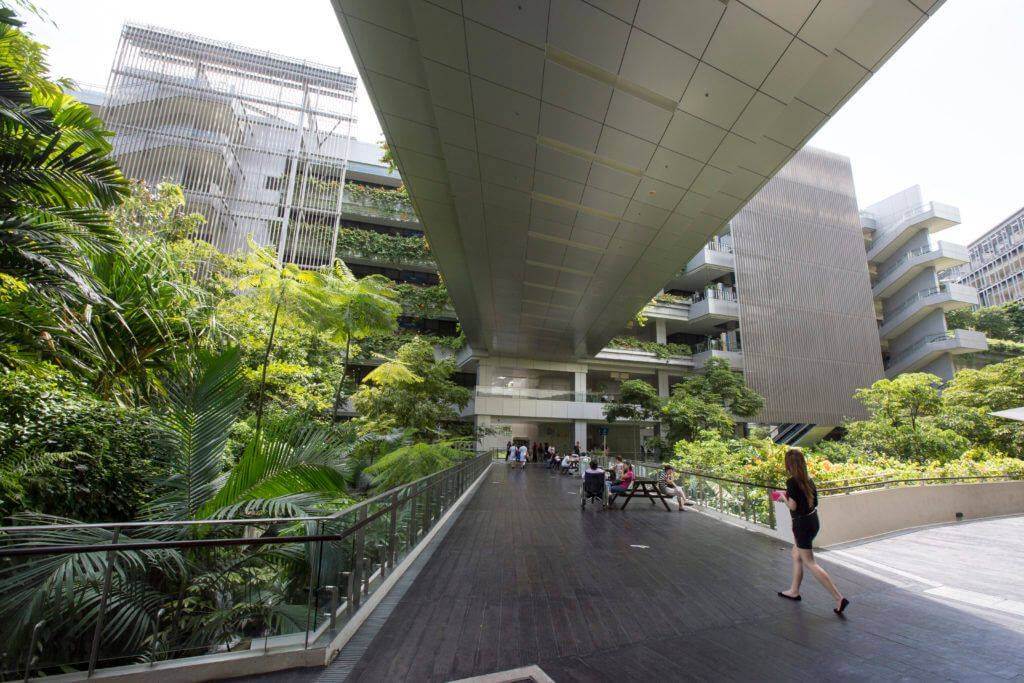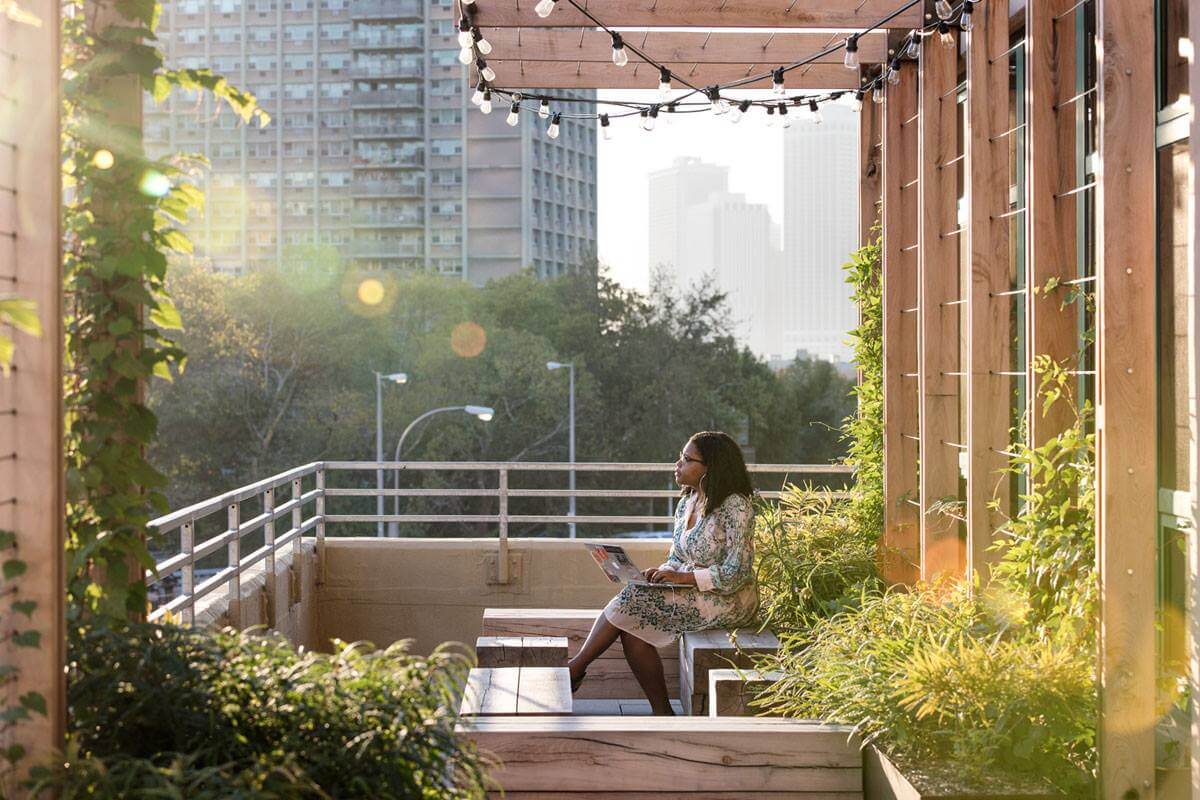In the past, nature and beautiful places were sought after because they helped with human survival. Hunters and gatherers were drawn to areas that provided sustenance and safety. Water, vegetation, trees, and openness provided the ideal environment for survival. It only makes sense that it is in our nature to be attracted to environments that facilitate biophilic design. Our bodies are pre-wired to prefer natural environments.
In today’s modern culture the majority of people live in suburbs and urban cities which usually do not foster a nature-friendly design. It is our goal here at Plant Solutions to restore the connection we have with nature in the built environment.
Biophilic design is not only aesthetically pleasing to the eye, but it is vital for our health as well. Studies show many benefits of biophilic design in schools, hospitals, the workplace, and in homes. In one study patients in the hospital with a view of the outdoors reported a more positive experience and used fewer painkillers resulting in a shorter hospital stay than patients without a view of nature. Viewing nature stimulates the visual cortex more than non-nature scenes which activate more pleasure receptors leading to a faster recovery due to less stress. Window views of nature are proven to increase concentration, and naturally adding nature indoors mimics this effect.
The design of our built environment clearly can improve our lives. A biophilic design improves the way we cope with stress, improve cognitive functioning, increase social interaction, and even speeds up recovery from medical situations.

Biophilic Design is a combination of neuroscience and architecture and is becoming even more critical as the world urbanizes. Adding nature to the built environment will enhance our quality of lives and strengthen our biological connection with nature. As a society we continue to become more and more dependent on technology, so biophilia is even more critical. The more we consider our ancestry and the makeup of our brains when designing the built environment, the better off we become physically, psychologically, and emotionally.
BIOPHILIC DESIGN – THE RISE
As humans, we inherently find beauty in nature. The idea that access to a green space improves wellbeing and productivity is not a new concept. Wealthy factory and mill owners during the 19th century created parks to ensure that their employees had access to a place to relax with fresh air. This concept has evolved, and today the relationship between us and nature is more understood. The biological need to be connected to the natural environment is being taken more seriously by employers, architects, and developers.
What was once seen as a luxury given the cost of designing green space on top of building costs is now considered a sound economic investment. Employers are now placing a greater emphasis on employee wellbeing. In the long run, employees well-being and health leads to higher productivity and ultimately more profit.
The effectiveness of biophilic design has a lot to do with overcoming the limitations of an environment. Here at Plant Solutions, we have a biophilic design solution for any space. We specialize in living green walls which can be installed in virtually any size room. In areas where space is limited, living walls and rooftop gardens are the perfect solutions for incorporating biophilic design.
Behind the Science; The Feel-Good Factor
Biophilic design refers to our biological connection with nature. This concept explains why we prefer an open landscape with natural features over the standard built environment of urban living. Visual and non-visual relationships with nature contribute to the way an environment makes us feel. Olfactory, auditory, and gustatory stimuli mimic actual living natural systems. Airflow references a breeze that we feel in the outdoor environment, and water and biomorphic patterns and form give reference to organic arrangements that occur in nature. These are all examples of biophilic design which aims to mimic the natural world.

At Plant Solutions, we understand biophilic design and the foundations it is built upon. We are leaders in interior landscaping and have a natural design solution for any environment. Contact us to learn more about how we can bring help to improve your space with nature.
